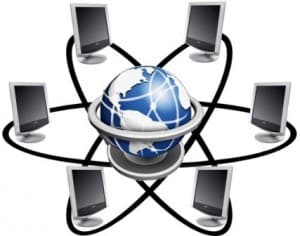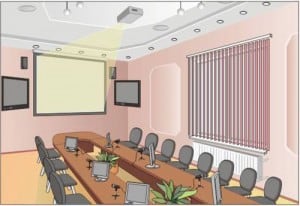
Today, the word “modernization” is heard at every turn. The development, improvement and innovation in science and technology are something to what modern human affection is growing rapidly. Hence the development of communications and telecommunications in various fields: business, manufacturing, medicine, as well as in education.
New means of communication are always doomed to a strong interest and demand from both children and adults. They have already aimed at the educational system, where the video-connection capabilities are quite extensive. Distance learning is any training courses, based on the interaction of distant teachers and students using the Internet and telecommunication technologies, and includes distance education programs and trainings in the corporate sector. It involves the creation of a unified platform for educational institutions, which allows to hold lectures, workshops, exchange of experience and training materials, bringing together all participants of the educational process from across the country or even the world.
It becomes increasingly difficult to surprise and interest modern children and even adults, we have to invent all new ways. The purpose of today’s educational system is in building more effective models of teaching and motivating students to study certain subjects. The status of the school, university and the level of teacher training are no longer the determining factors of good education, great attention is paid to the fact what in addition to these factors an educational institution can offer.
Videoconferencing system (VCS) is an integral part of the most promising high-tech information and educational systems. And of course, many educational institutions use them for distance learning. Museums, zoos, scientific laboratories, research institutes, industrial enterprises, specialized institutions – all this can be seen by students without leaving the borders of the audience. Video conferencing allows making video tours to all these and many other interesting places. And for children with disabilities who do not have the opportunity to leave the house, this technology may be generally the only way to study, through this they can be virtually present at the school.

VCS allows not only students but also teachers from different cities and countries to share knowledge and experiences, to demonstrate the scheme, products, hear and see the reaction of each other. Lectures, space bridges, workshops, tests, and even the presentation of qualifying papers, degree projects and theses are now available online. You can freely communicate with experts, professors, scientists and writers. Current students can be envied.
In addition to traditional video conferencing tools collaborative tools such as whiteboards and display of slide shows are used in training. Students can ask questions to the lecturer not only with a microphone, but via the built-in chat. But you shouldn’t forget about the live chat and personal dialogue with the teacher – any innovative and high-tech solutions do not worth it, it is important to understand.
An important feature of the use of video-technologies in education is the encouragement of research and creative activity, as well as the development of cognitive interests of students. Video-technologies may be useful in preparing for the frontal experiments in the study of new material with real equipment and will be irreplaceable in its absence. Interactive experiences can be used for demonstration of the lesson. This will solve issues related to the lack of laboratory equipment, optimally organize a working time. There will also be an effective method of use of interactive labs for independent work of students. Video presentations will help curious students to view work progress in the right mode and to elaborate on the various stages of the experiments.
Holding of computer lessons using video-technologies requires special training. It is better to write scripts, organically including in them the real experiment, and the virtual one (that is showed on a computer screen) to these lessons. Typically, these scripts are prepared in the form of multimedia presentations using Power Point program from the Microsoft Office. If teacher uses these programs, he has a wide space for creativity. He can prepare a lesson, taking into account the specific characteristics of the class, the rate of learning the material in the current academic year. The traditional sources of demonstration materials are commercially available multimedia CDs (training courses and encyclopedias), materials on the Internet and own development.
Education is the only business still debating the usefulness of technology (Rod Paige, former U.S. Secretary of Education, 2002). The experience of teachers shows that such lessons cause the real interest of students, force to work everyone, even weak guys. The quality of knowledge in this case markedly increases.




